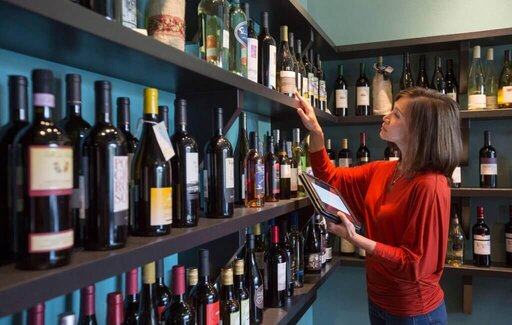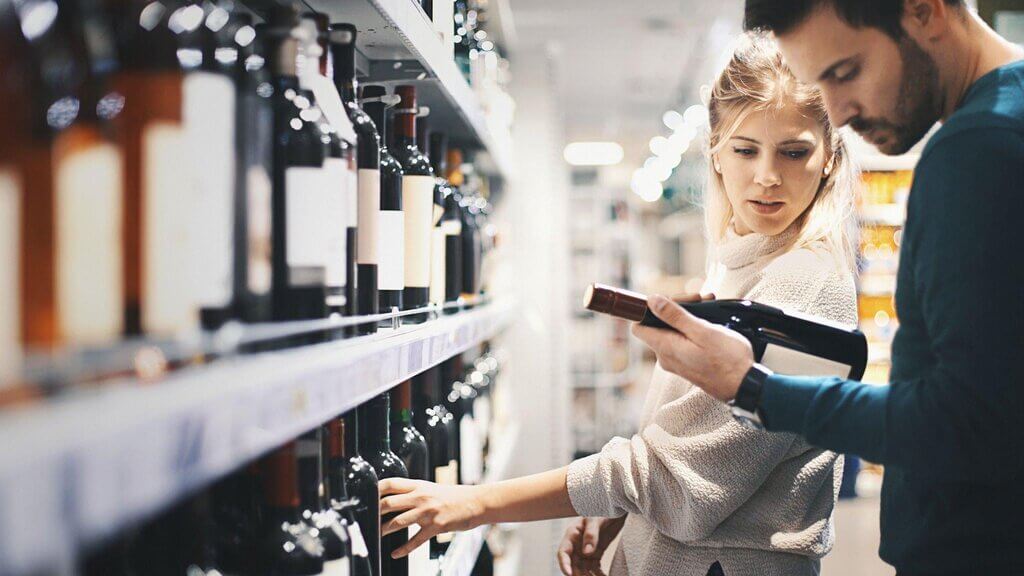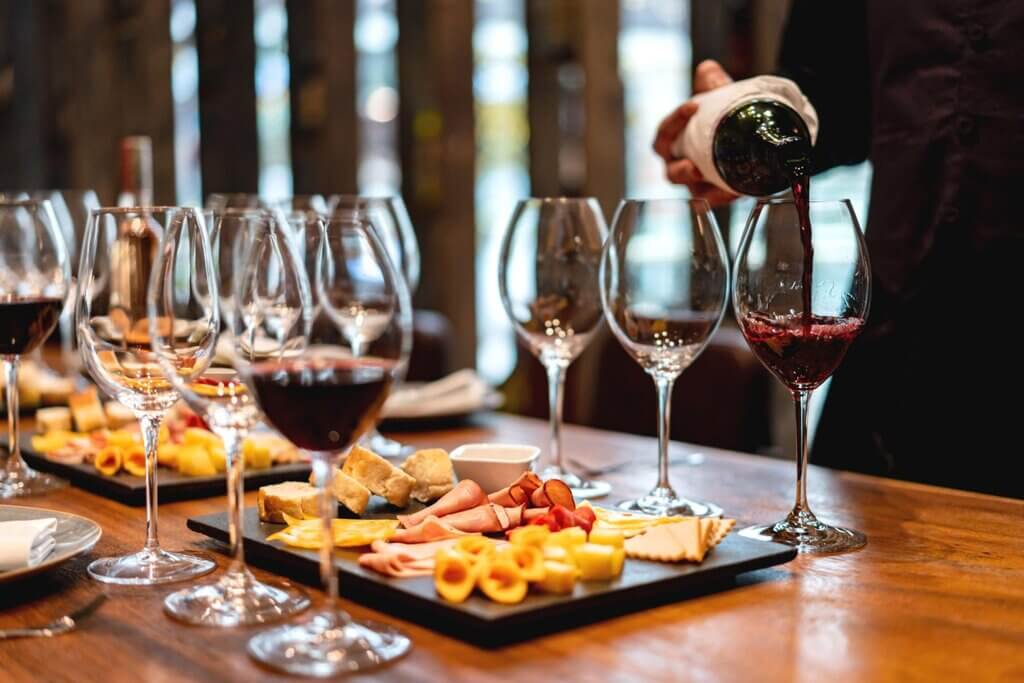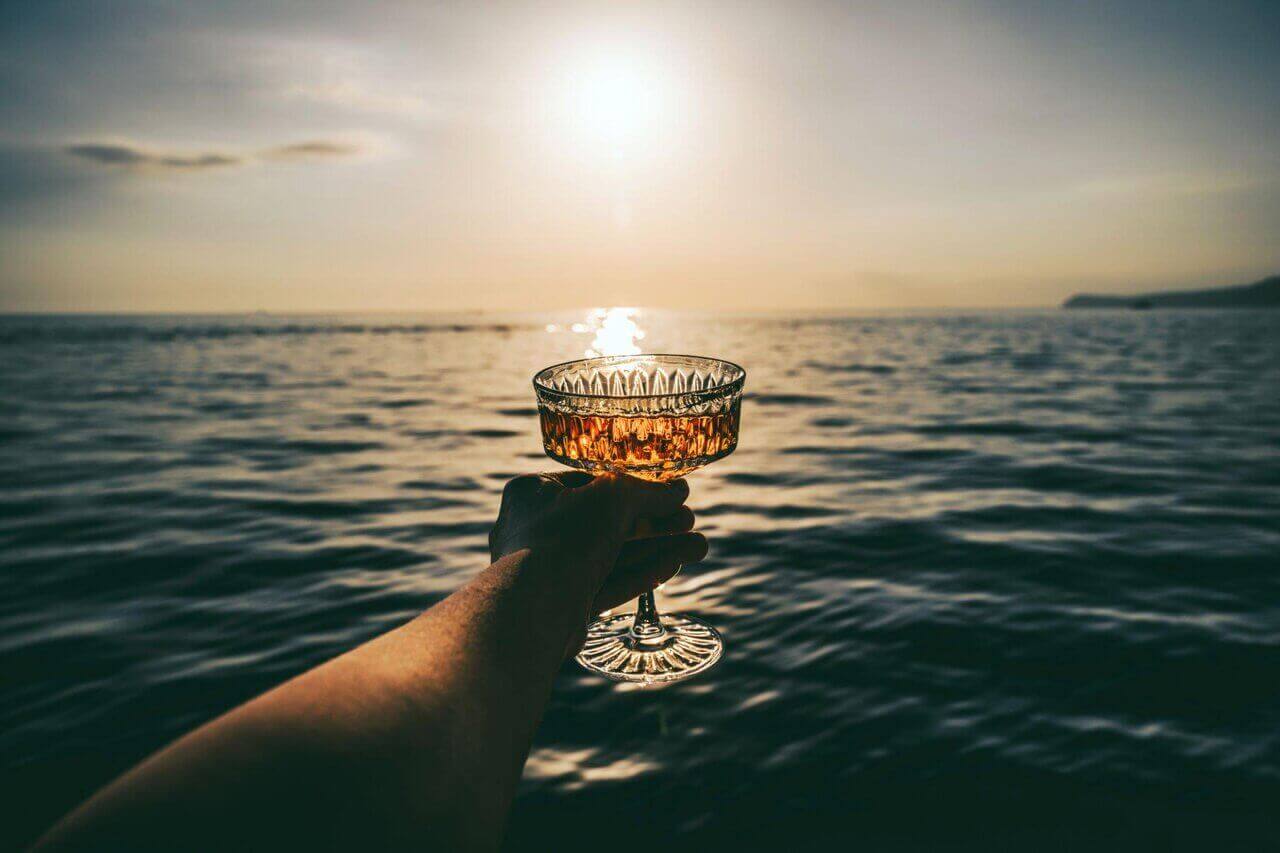Wine is an incredibly vast and rich world that some find intimidating to get into. However, with a bit of basic background knowledge and the right approach, wine can become an enjoyable hobby for virtually anyone. This complete beginner’s wine guide aims to make taking those first sips easier!
We’ll start with the absolute basics – defining wine and providing historical context around its origins and role in culture over time. Next up is guidance around key types of wine, critical vocabulary for describing and discussing wine intelligently, plus plenty of tips for choosing, storing and serving. Along the way, you’ll find real starter advice for gaining hands-on wine tasting experience including wine bar etiquette. Lastly, frequently asked questions help tie up loose ends.
While centuries of winemaking history and encyclopedic details about individual growing regions deserve volumes of their own, this guide aims to establish the top-level information every budding wine enthusiast should know where to kickstart their vinous adventure! So let’s get sipping!
What is Wine? A Brief History & Cultural Significance
At its most basic, wine consists of fermented grape juice – the natural liquid inside grapes chemically converts into alcohol when yeast is introduced. While other fruits can be used to make wine-like beverages, the term “wine” itself always denotes a grape-based alcohol.
The origins of purposefully making wine date back 6,000-8,000 years with archaeological evidence around the Caucasus Mountains region spanning modern-day Iran, Georgia and Armenia pointing to large-scale production in clay jars. As grape growing and wine production knowledge spread via trade routes like the Silk Road, prominent winemaking hubs sprouted up in Europe in places like Greece, Italy, France and Spain alongside North African regions.
Wine holds major historical and ongoing cultural importance in religion and customs worldwide. As a topic, wine embodies science, agriculture, regional tradition, business/economics, hedonistic hobby and so much more. Today, tens of thousands of distinct wine producers span traditional archetypal regions alongside upstarts in Argentina, South Africa, Australia, USA and beyond.
But before getting overwhelmed by the galaxy of wine available from all corners of the world, understanding the framework of core types and styles serves as your key to unlocking enjoyment as a beginner. Let’s cover basics next.
Wine Types & Styles Demystified for Beginners
While intimate knowledge of obscure French wine appellations or niche varietals merits sommelier-level mastery further down your wine journey, casually appreciating wine starts with grasping one basic dichotomy – wines come in either red or white styles.
Red Wines
Red wine differs from white for one key reason – the use of grape varietals with dark-colored skins present during fermentation. Red-fleshed grape types include popular Cabernet Sauvignon, Pinot Noir, Syrah, Grenache, Malbec and Sangiovese among others. Winemakers manage variables like skin contact time, fermentation methods and aging approaches alongside blending decisions to create unique red wine end products.
Flavor profiles run the gamut from light & fruity, herbaceous & earthy, bold & oaky, to jammy & full-bodied. Savory umami notes like soy sauce, caramel and baking spice also come through, especially as red wines age in-bottle.
White Wines
White wines utilize grapes with green, yellow or clear flesh – mainly Pinot Grigio, Chardonnay, Riesling and Sauvignon Blanc. Winemakers again tailor methods like crushing, pressing, clarifying, fermenting and barrel-aging based on the wine style desired. Ranging from crisp & bright, medium-bodied and round & creamy, white wine flavor profiles beam with citrus, orchard fruit, melon, stone fruit, floral and even steely minerality.
Rosé Wines
Known as summer’s perfect porch pounder, Rosé wines (pronounced “Row-Zay”) bridge the gap between lighter-bodied red and crisp white wines. Made from dark-skinned red grapes, rosé wine production allows only brief skin contact to extract a kiss of color and flavors before pressing. Notes of strawberry, raspberry, rose water and herbs wash over the palate thrill!
This quick glimpse into fundamental styles sets the stage for more nuanced exploring. But before getting overwhelmed by options, learning wine vocabulary goes a long way towards building confidence.
Must-Know Wine Vocabulary for Sounding Like a Pro
The wine lexicon runs deep with obscure niche terminology demanding years of scholarly devotion to fully grasp.

Luckily, casually communicating wine preferences only requires a handful of key phrases. Master these and you can hold your own discussing vino!
Basic Wine Descriptors
Dry – Possesses very low residual sugar for tartness absent sweetness.
Sweet – Contains unfermented sugar noticeable on the tongue.
Tannic – Mouth-puckering bitterness and astringency sensation derived from skins, seeds and stems present during winemaking. Associated with firmness and structure.
Oaked – Aged in contact with oak barrels to impart flavor/textural elements like smoke, toast, cocoa and spice.
Fruity – Prominent flavors of the grape varietal itself – cherry, currant, blackberry for red wines and apple, peach, mango in whites
Earthy – Mineral, loam, forest floor funkiness often from fermentation and aging methods leveraging ambient yeasts and oxidative exposure.
Full-bodied – Heavy, viscous texture across the palate signaling above-average alcohol levels and concentrated flavor compounds.
Wine Fault Descriptors
Yes, flaws happen! Learning to identify off-putting flavors helps avoid wasting money on drain-bound bottles. Key wine faults include:
Corked – Unpleasant humid cardboard smell resembling moldy basement from damaged corks reacting with juice.
Oxidized – Flat faded appearance with flavors reminiscent of apple cider and sherry caused by excess oxygen exposure during production.
Reduced – Repulsive aromas like rotten eggs or burnt rubber from reduction spoilage – the opposite of oxidation.
Brettanomyces / “Bretty” – Antiseptic rubbery or bandaid-like funkiness from a rogue yeast contaminant.
Heat damaged – Noticeable loss of fruity aroma and cooked jam flavors from grapes left baking too long on vines or wine stored improperly at high temps.
Volatile acidity (VA) – Pungent vinegar-forward nose with nail polish remover hints typically from the growth of acetate bacteria due to poor sanitation and oxygen ingress during the winemaking process.
While less common today thanks to improved winemaking technology and scientific understanding, bottles still suffer faults. Being able to articulate issues aids immensely in communicating with servers or wine shop staff when an off bottle lands on the table.
Wine Service Rituals & Etiquette
Proper terminology codifies formal traditions still practiced in fancy dining. While much hoity-toity old guard rituals fade into history, knowing basics around formally tasting wine remains helpful. Key vocabulary includes:
Table Wine – Any wine not requiring special service considerations regarding temperature, decanting oxygen exposure, etc. – the average bottle you pick up.
Opening – Removing the cork closure. Som herds use specialized tools but any wine lover can purchase consumer-friendly wine openers.
Breathing – Pouring wine into receptacles allowing enhanced aeration/oxygen interaction said to “open up” aromas and flavors. Decanting red wines before serving aids this process.
Legs – Visible trails of wine residue sticking to the inside of a glass after swirling. Anecdotal indicators of alcohol and sugar levels.
Nosing – Repeatedly smelling wine aromas in swirling glassware to identify scent components that translate to perceived flavors.
Tasting – First sipping wine across tongue and mouth to evaluate fundamental style, sweetness, acidity and tannin structure then paying attention as aromas transpose to tastes.
Spitting – Discarding wine rather than swallowing to avoid inebriation – essential for professional tasters analyzing dozens of wines daily without drunkenness.
Sommelier – Formal title for educated wine professionals working in hospitality – mainly restaurants – curating selections and assisting pairing choices. Entry-level to master rankings exist.
Certainly, don’t get intimidated by all the customs surrounding formal wine rituals! Starting out, focus first on relaxed enjoyment rather than precise analysis. As passion grows, dig deeper into traditions like decanting wines and disciplined tasting techniques to elevate your vinous journey.

Tips for Choosing Wine Like an Expert
Aimlessly wandering supermarket aisles or scrolling online inventories proves daunting for even confident wine drinkers given the sheer options available today. That said, a methodical approach makes selecting bottles far less stressful. Follow these pro tips:
Lean on Store Staff
Sommeliers and educated wine merchants offer invaluable guidance through questions about favorite food flavors, budget, special occasions needs and past enjoyed wines. Never hesitate reaching out! Building rapport at local shops leads to excellent recommendations.
Consider Region First, Then Grape
Pinpointing a country or region focuses the playing field allowing easier grape varietal selection. Love zesty gooseberry and lime? Next bottle: New Zealand Sauvignon Blanc. Adore dark cherry with mocha and oak influences?
Try California Merlot.
Don’t Judge Wine by Label Alone
Cutesy critter labels and royal insignia don’t guarantee quality. Conversely, dull branding may hide insane value! Price offers better clues but experimenting based on region/grape trumps judging superficial wrapping. $8 bottles with interesting blends exist!
Vintage Only Matters for Some
Boutique estate old world wineries emphasize vintage – the year grapes are harvested – on labels indicating quality variation year-to-year. Large production wines designed for consistency often downplay vintage. Not critical deciding factor for most casual drinking.
Consider Alternative Packaging
No shame in the value-friendly box! Premium juice in cartons and cans eliminates pesky oxidation and spoilage worries. Ignore taboos around wine packaging – especially for everyday quaffers. If it tastes great, who cares?
Push Comfort Zones
Dabble with unfamiliar styles or avant garde blends pushing preferences. Discovery means learning! Sample outside usual buying habits at wine bars by the glass without committing to full bottles.
Equipped with tips for tactfully chatting with shop owners and zoned into smart selection criteria filtering thousands of labels, you’re already leaps ahead finding bottles that perfectly match preferences and budgets. But what about enjoying wine at home? Storage, serving and pairing notes follow.
Proper Wine Storage, Serving and Pairing Tips
You did your homework purchasing the perfect special occasion red and crisper mood-boosting white – now to optimize enjoyment at home. Here are wine cellar management, presentation and pairing pointers for beginners:
Short Term Storage
The heavy lifting of temperature and humidity control matters less for bottles emptied within months of purchase. Keep reds traditionally fuller-bodied at room temp, around 60-65°F. Whites and zippy reds prefer fridge cooling around 48 – 56°F.
Long Term Aging
For investment grade collectables or special bottles saved for big milestones, optimal storage promotes development. All wine requires fairly stable 55°F along with 60-75% humidity to prevent drying out. Dedicated wine refrigerators exist offering digital monitoring.
Serving Temperatures
Though creative types freezer-chill reds and tepidly serve whites for contrast, classic serving standards based on body, sweetness and alcohol level avoid shocking senses:
- Sparkling wines, dry lighter whites: 44-50°F
- Fruity Sauvignon Blanc, rosé, Prosecco: 46-56°F
- Chardonnay, Riesling, Gewürztraminer: 48-55°F
- Medium red Cru Beaujolais: 55-60°F
- Pinot Noir: 55-65°F
- Rest of red roster: 62-68°F
Pairing with Food
Essentially, balance intensity of flavors – light seafood with higher acid bright whites. Bold steak with jammy structured reds. Bittersweet chocolate with creamy oak-kissed wines. Spicy heat with sweet Riesling. Acid cuts fat and vice versa. Push boundaries discovering combos!
While we’re just scratching the surface on maximizing home enjoyment, these foundations set you well on the way towards wine confidence. Ready to start tasting?
Gaining Tasting Experience at Wine Bars
Eventually after all the studying and scribbling tasting notes on purchases for the home cellar, curiosity demands trying wines by the glass before buying to focus preferences. Wine bars offer that opportunity!

What Exactly are Wine Bars?
Positioned between formal dining and liquors stores, wine bars focus (surprise!) exclusively on vino. They come in two main styles – cozy dens packed with old world charm accentuated by flickering candles alongside contemporary lounges flashing funky neon centered around elaborate preservation systems dispensing hundreds of options from automated walls and screens.
Navigating Wine Bar Menus
While flashy systems draw eyes, most wine bars categorize ~40 selections among types: sparkling, light/fruity reds, complex reds, rich whites and dessert wines. Starting with characteristic regions helps decipher unfamiliar grapes. Can’t go wrong asking servers for versatile food-pairing recommendations too!
Tasting Flight Flights of Fancy
Ideal for wine bar newbies, tasting flights feature 3-5 ~2oz pours – often clustered within a certain style. This allows tasting and comparing old world classics against trendy avant garde bottles. Servers explain selections if you ask!
Do Tasting Flights Equal Drinking Flights?
Depends! Calculated alcohol content near a bottle a person but standard tasting pours are rarely gulped like shots at a bar. Slowly evaluating then dumping remains absolutely acceptable even expecting. Spitting alleviates blood alcohol level concerns.
Bringing Friends
Discussing impressions with an enthusiastic buddy introduces new perspectives. Wine often links people together sparking lasting memories. Comfort levels encourage approaching staff for guidance.
Snacking While Sipping
The dainty bites and small plates served alongside wines merit equal attention from palates. Thoughtfully composed menus exclude overtly sweet or spicy options clobbering wine subtleties. Bring on the charcuterie boards!
Wine Bar Etiquette Basics
Linger leisurely with lingering last sips but remain conscientious of pacing pouring progress respectfully if patrons queue behind you. Ask questions while acknowledging staff simultaneously serve surrounding guests. Gracious gestures beget wonderful guidance!
Through aroma observations, flavor analysis, textural changes across tongue travels from tip to rear and aftertastes fading into finish, armchair wine critics emerge ready to invest in their own personal preferences confidently.
Frequently Asked Beginner Wine Guide Questions
Let’s wrap up surveying starter wine material with answers to common wine-related queries from novice sippers:
Do I need to invest hundreds of dollars in classes or equipment?
Absolutely not! Wine education today overflows online for free or at nominal cost. Value stems more from focused region/style learning. Tasting skill grows through experience. Fancy kit often feels gadgetry exceeding necessity.
Will I develop a wine allergy? Is wine gluten-free?
Few suffer negative wine reactions beyond alcohol flushing or standard hangovers. Sulfites trigger asthmatics occasionally but prevalence gets overstated. Always check FAQs with vintners if concerned. Most wines contain no gluten contacting containers during production.
Why do I gravitate towards sweet wines?
Social conventions wrongly suggest dry equals better quality when personal preference reigns supreme. Off-dry styles like German Riesling offer incredible food pairings and nuance. Choose brightness over cloying sugars and explore at will based on own palate.
Do expensive bottles live up to hype?
Price predicts performance…to a point. $500+ bottles WOW in blind comparisons against $50 wines. Differences narrow approaching $100 though given production tweaks. If special occasions call for lux splurging go ahead but know most likely satisfaction diminishes significantly above mid-triple digits.
Will age worthy wines taste good young? Should I save all bottles gifts?
Structured age-worthy wines soften and integrate given 5-15+ years. However, poor storage quickly deteriorates wine. Best to try one bottle soon after receiving then structure vertical tastings from additional bottles over years/decades.
How long does wine last opened?
Modest tannic reds show delightful difference instantly then degrade within 3 days. Bold reds sing 7-10 days later. Whites drink delightfully next day then slowly dull thereafter – oaked Chardonnay lasts longest. For peak freshness, leverage vacuum preservation gadgets.
What’s proper swirling and sniffing etiquette?
Giant loops swirling wine up around glass perimeter releases aromas best but avoid aggressive motions splashing neighbors! Custom stems coddle glasses optimizing focus. Lean inward gently cueing bouquet. No violently invasive nose plunging necessary.
Can I bring wine into restaurants lacking licenses?
Rarely. Regulations restrict establishments lacking liquor licenses from allowing carry-in alcohol. Call ahead to confirm though some permit for special occasion bottles celebrating with purchased group meals/events only. Private clubs allow member wines usually.
What’s the best dish for absolute wine beginners?
Edit from fancy restaurant presumption – delicious wines come with ANY dish! The global pantheon of wine arose thanks to bottlings complementing local peasant fare like pizza. Sip while snacking on whatever foods bring joy then explore finer pairings. Wine is for everyone!
Wrap Up & What’s Next Steps for Wine Learners
Congratulations digesting wine starter material – now the fun really begins through applying knowledge, forming preferences and continuing education! Grab a special bottle making tonight’s dinner more memorable. Confidently chat with that local wine shop owner. Visit a funky wine bar and try something totally unique.
Most of all, realize no barrier exists between beginners and brilliant bottles – only curiosity



